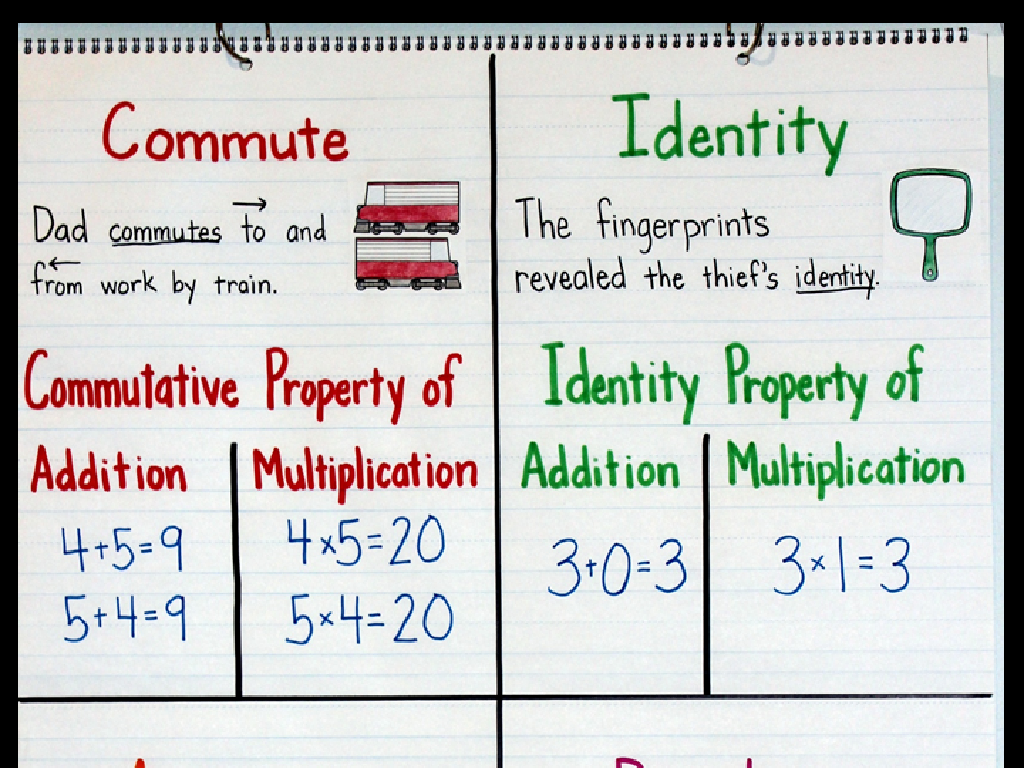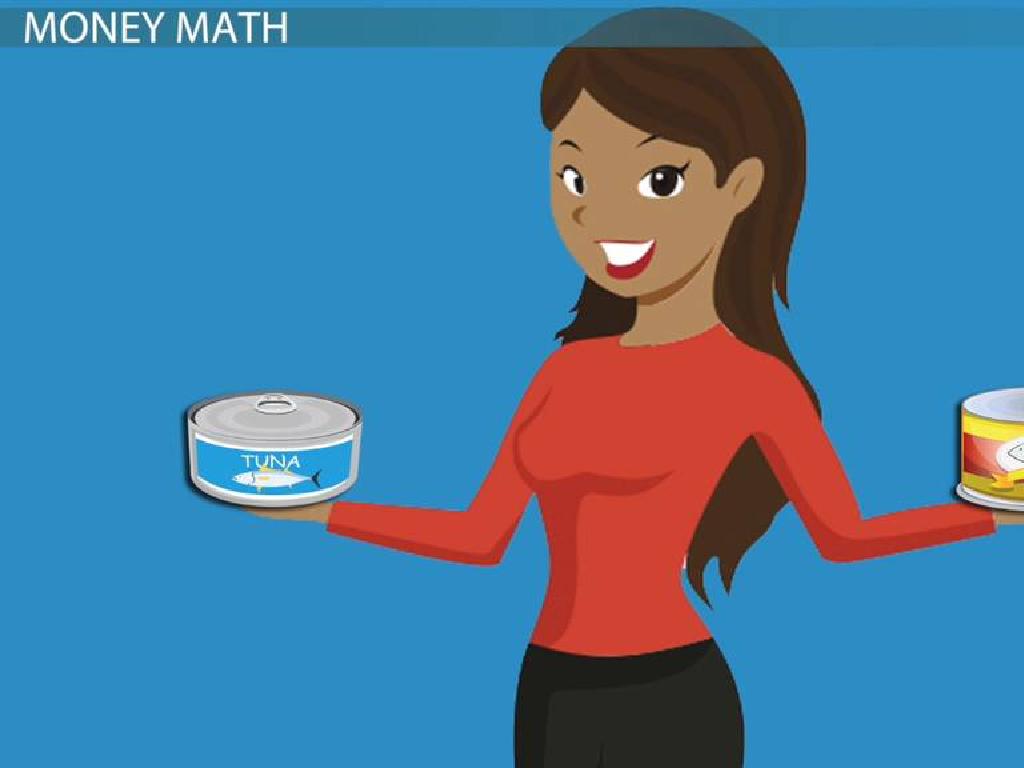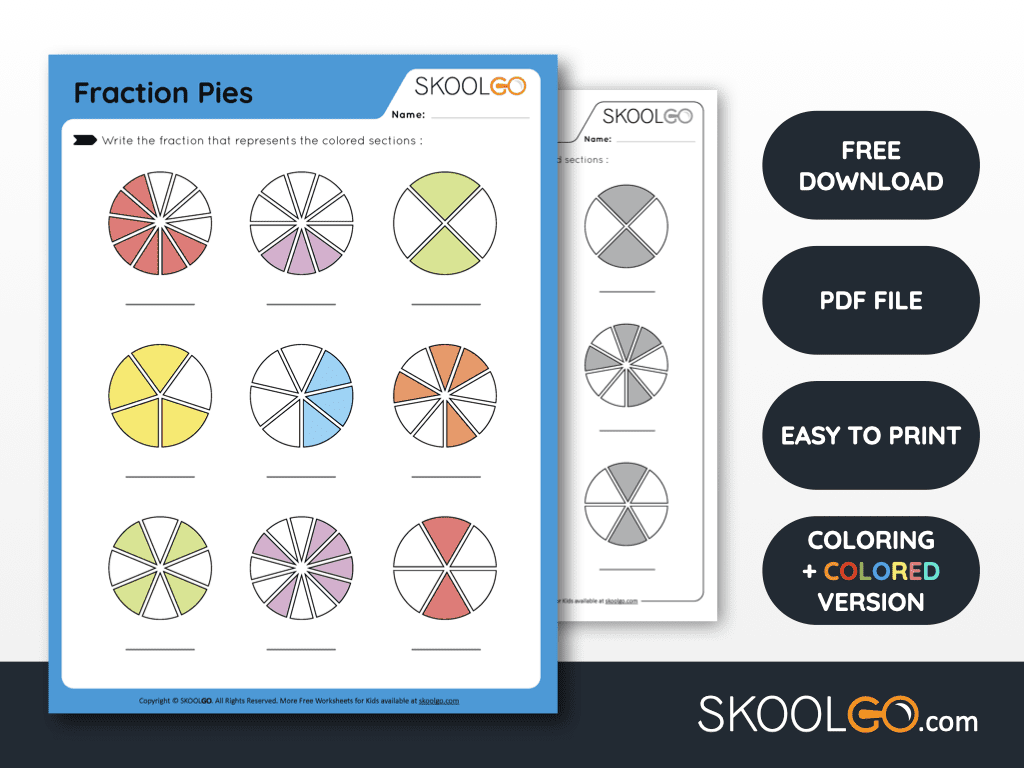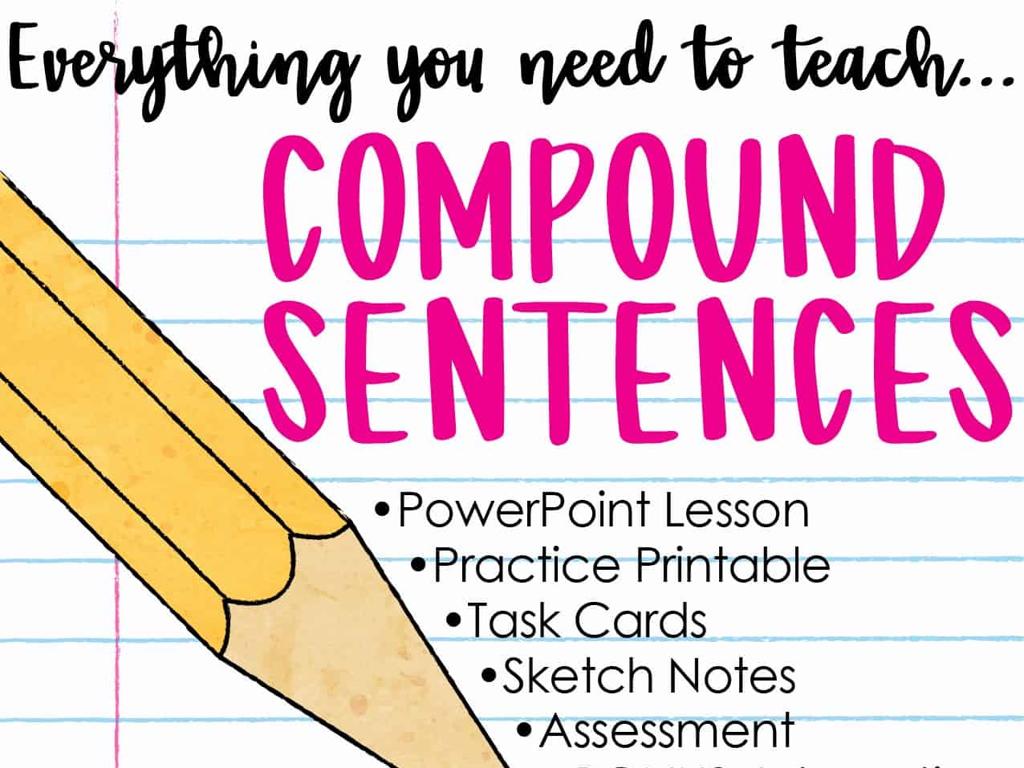Do The Ratios Form A Proportion?
Subject: Math
Grade: Sixth grade
Topic: Ratios And Rates
Please LOG IN to download the presentation. Access is available to registered users only.
View More Content
Do the Ratios Form a Proportion?
– Grasping the concept of ratios
– A ratio compares two quantities, like 4 apples for every 3 oranges.
– Defining a proportion
– A proportion shows two ratios are equal, e.g., 4/3 = 8/6.
– Today’s objective: Identifying proportions
– Practice problems on proportions
– We’ll solve examples to see if ratios like 4/3 and 8/6 form a proportion.
|
This slide introduces the concept of ratios and proportions to the students. Begin by explaining ratios as a way to compare quantities, using relatable examples like comparing fruits. Then, define a proportion as an equation that shows two ratios are equivalent. The goal for today’s lesson is to enable students to determine if two given ratios form a proportion by cross-multiplying and checking for equality. Provide practice problems for students to apply this knowledge, ensuring to include a variety of examples to cater to different learning speeds and styles.
Understanding Ratios
– Definition of a ratio
– A ratio compares two quantities showing their relative sizes.
– Ways to write ratios
– Ratios can be expressed as ‘3 to 4’, ‘3:4’, or ‘3/4’.
– Real-life ratio examples
– Examples: recipe ingredients, map scales, or mixing paints.
– Ratios and proportion
|
Introduce the concept of ratios to the students by defining what a ratio is and how it can be used to compare two or more values. Explain the different ways ratios can be written and ensure students are comfortable with each format. Provide relatable examples such as recipes (e.g., 2 cups of flour to 1 cup of sugar), map scales (1 inch represents 1 mile), or mixing colors (1 part blue to 2 parts yellow to make green). Discuss how understanding ratios is the first step towards learning about proportions, which are equations that show two ratios are equivalent. Encourage students to think of other examples where they encounter ratios in their daily lives.
Exploring Proportions in Ratios
– Understanding proportions
– Proportions are two ratios that have the same value.
– ‘Equivalent’ ratios concept
– Equivalent ratios have the same relationship between numbers.
– Writing proportions as equations
– Use the ‘=’ sign to show two ratios are equal, like a/b = c/d.
– Checking proportion equality
– Cross-multiply to check if two ratios form a proportion.
|
This slide introduces the concept of proportions within the context of ratios. Proportions are essentially statements that two ratios are equal. It’s crucial to explain that ‘equivalent’ ratios are just different expressions of the same comparison. For example, 1/2 is equivalent to 2/4. Teach students how to express proportions using an equation, which is a fundamental skill in solving problems involving ratios. Finally, demonstrate how to verify if two ratios are proportional by cross-multiplying and comparing the products. Provide examples and practice problems to solidify their understanding.
Cross Multiplication: Do Ratios Form a Proportion?
– Introduce Cross Multiplication
– A method to compare two ratios and check for proportionality
– Applying Cross Multiplication
– Multiply across the ratios: a/b = c/d becomes ad = bc
– Worked Example
– Example: Does 4/9 = 8/18? Cross multiply: 4*18 = 9*8
– Practice Problem
|
This slide introduces the concept of cross multiplication as a technique to determine if two ratios form a proportion. Begin by explaining that if the product of the means equals the product of the extremes, the ratios are proportional. Demonstrate the method with a worked example, such as 4/9 and 8/18, and show step-by-step how to cross multiply and compare the results. After the example, provide a practice problem for the students to solve, reinforcing the concept. Encourage students to ask questions and discuss any difficulties they encounter while applying the method.
Practice Problems: Proportions in Ratios
– Work through examples as a class
– Determine if ratios are proportional
– Compare two ratios to see if they have the same relationship
– Engage in class problem-solving
– Students will volunteer to solve problems on the board
– Discuss our solutions and methods
– We’ll talk about different ways to find proportions
|
This slide is designed to facilitate active learning through class participation. Start by working through examples together, demonstrating how to identify proportional ratios. Encourage students to look for equivalent fractions or use cross-multiplication to determine if two ratios form a proportion. Invite students to the board to solve problems, fostering a collaborative learning environment. As students present their solutions, discuss the methods used and clarify any misconceptions. This activity will help solidify their understanding of proportions in ratios. Prepare a variety of problems with different complexity levels to cater to all students and keep the activity engaging.
Real-World Applications of Proportions
– Proportions in cooking recipes
– Adjusting ingredients for more or fewer servings
– Map reading uses proportions
– Scaling distances to read maps accurately
– Art and design rely on proportions
– Maintaining visual balance in compositions
|
This slide aims to show students how proportions are not just a mathematical concept but a practical tool used in everyday life. In cooking, proportions are essential for adjusting recipes to serve different numbers of people. When reading maps, proportions help us understand the actual distance between locations. In art and design, proportions are crucial for creating aesthetically pleasing and balanced works. Encourage students to think of other areas where proportions are important and to bring examples from their experiences. This will help them see the value of what they learn in math class and how it applies to the real world.
Class Activity: Proportion Hunt
– Find classroom proportions
– Pair up for ratio creation
– Develop equivalent ratios
– Use objects or numbers to show two ratios that have the same value
– Present findings to class
|
This interactive activity is designed to help students recognize and understand proportions in a practical setting. Have the students search for real-life examples of proportions in the classroom or school, such as dimensions of objects, quantities of supplies, or any other comparable ratios they can find. Encourage them to work in pairs to foster collaboration and to create their own set of equivalent ratios using their findings or by inventing scenarios. Each pair will then present their equivalent ratios to the class, explaining how they determined the ratios are equivalent. Possible activities: measuring items, comparing quantities of classroom materials, or using book page numbers. This will help them to visualize and grasp the concept of proportions in a tangible way.
Wrapping Up: Ratios and Proportions
– Recap on proportions
– Homework: 5 sets of ratios
– Find ratios in real-life or textbooks
– Determine proportionality
– Use cross-multiplication to check if ratios form a proportion
– Quiz preparation for next class
– Review today’s lesson and practice problems
|
As we conclude today’s lesson on proportions, remind students of the key concepts discussed. For homework, they should find and solve five sets of ratios, applying the cross-multiplication method to determine if they form a proportion. Encourage them to look for examples in their daily lives or use problems from their textbooks. This exercise will help reinforce their understanding and prepare them for the upcoming quiz. Make sure to review the steps for identifying proportions and provide tips for the quiz during the next class.






